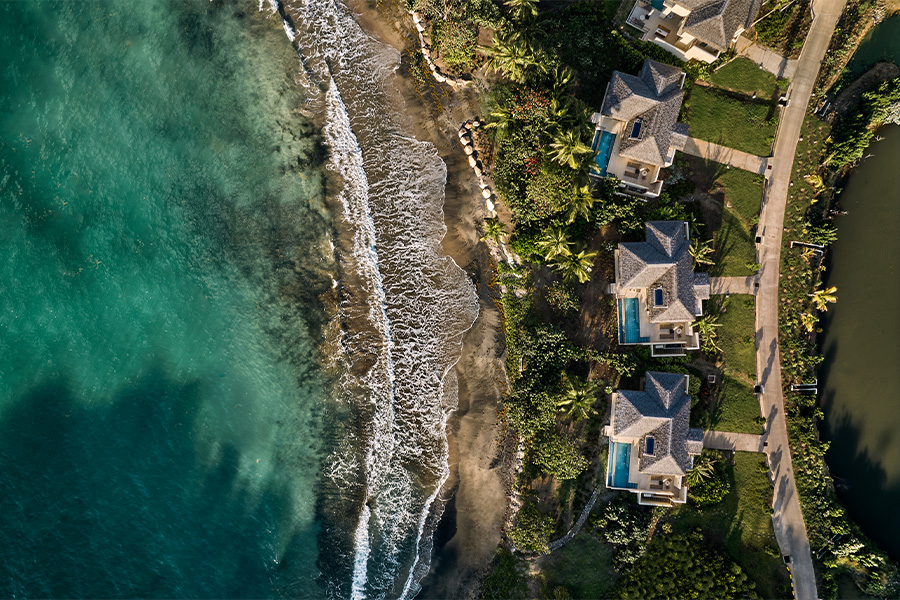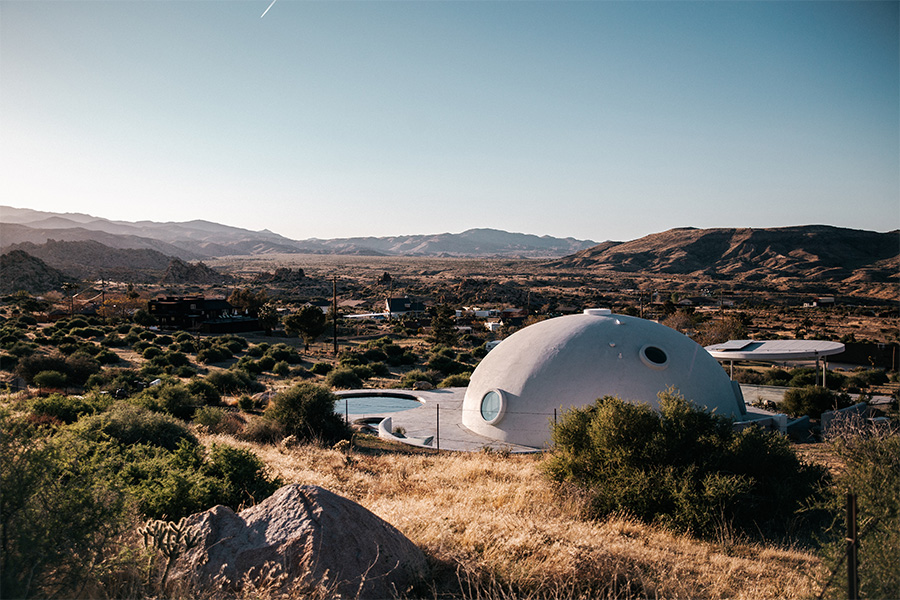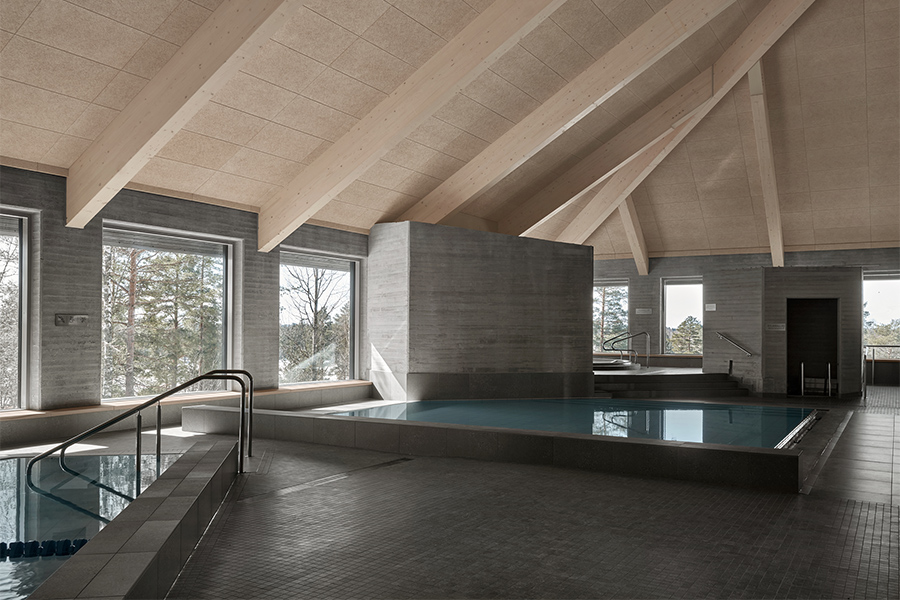Wellness is no longer a line item or a luxury—it’s a lens through which hospitality is being reimagined. The Global Wellness Institute (GWI) forecasts the wellness economy to reach $8.5 trillion by 2027, with the wellness real estate market alone projected to hit $1.1 trillion by 2029. (The industry doubled from $225 billion in 2019 to $548 billion in 2024.)
Guests are no longer only looking for a place to relax; they’re seeking longevity, connection, and personalized care. For them, wellness is about transformation across mind, body, spirit, and space. With the rapidly expanding market and growing demand, the opportunities—and the stakes—are clear.
“More consumers are seeking out healthy places to live, raise their families, and age with a longer healthspan,” says Beth McGroarty, vice president of research at GWI. “They want healthy indoor air and non-toxic environments, nature and outdoor recreation, social connections in our lonely world, [as well as] stress management and sleep.”
While the spa still matters, today’s forward-thinking hospitality brands are designing ecosystems that support wellbeing across life stages, emotional needs, and social contexts. At this year’s HD Expo + Conference, industry leaders dove into what this all means. “A lot of established hospitality brands looked at wellness as the spa and the gym; it was a necessary evil that you had to build,” says Sarah Bonsall, regional director, the Americas, architecture and design at Six Senses, during a panel. “There wasn’t an ROI—it was something you needed to do to get guests in the door. That has changed fundamentally.”
Now, hotels like Six Senses are expanding offerings so guests can stay well on the road, and even stay longer with wellness-centric residences. In fact, the GWI finds that wellness-focused residential properties at the mid- and upper-market ends command a premium price.
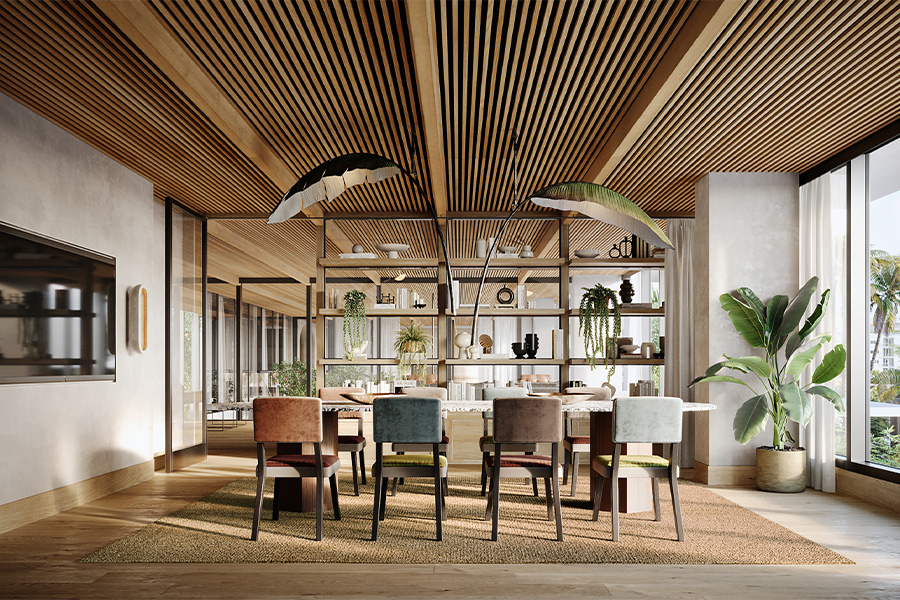
The private boardroom at the Well Residences in Bay Harbor Islands, Florida unfolds beneath slatted wood ceilings, shown in a rendering
Non-hotel companies are also getting in on the wellness branded residences game, such as the Well, which offers amenities ranging from spa treatments to movement classes at its locations around the world. The brand is now bringing its expertise to residences with the Well Bay Harbor Islands, which debuts in September in Florida with architecture by Arquitectonica and interiors by Meyer Davis. (The Well Coconut Grove will follow in 2028 with 194 residences designed by the same team.) “Our job is to create the ecosystem for people to pick what works for them at any given time and choose their own adventure,” points out the Well cofounder and chief creative officer Kane Sarhan.
That same philosophy drives Equinox’s approach. “We call ourselves a club because we want it to be your lifestyle,” says Nadia Biski, vice president of architecture at Equinox. “It’s not just a destination but a journey. It’s your life—how you live each day.”
Whether or not a space is intended specifically for wellness, spatial design plays a critical role in this evolution. Stanley Sun, principal and creative director at Toronto-based Mason Studio, poses the question, “What is it about us and our bodies that are connected that can change based on space?” A multisensory palette—scent, sound, light, and touch—can shift how people interact with their surroundings, themselves, and even how they form memories. Blurring the lines between retail, wellness, and hospitality, Mason Studio designed the Clinica, a beauty retail outlet and spa, as a model for a new kind of healing space. “We wanted people to feel [good] when they walked in,” says Sun. “Our light bar is a flood of light that creates no shadows on your face so you can look in the mirror and feel confident and strong.”
As the definition of wellness evolves, so does its impact on the hospitality landscape. Here’s how wellness is transforming the design and development of hotels and destinations in 2025.
Living Longer—and Better
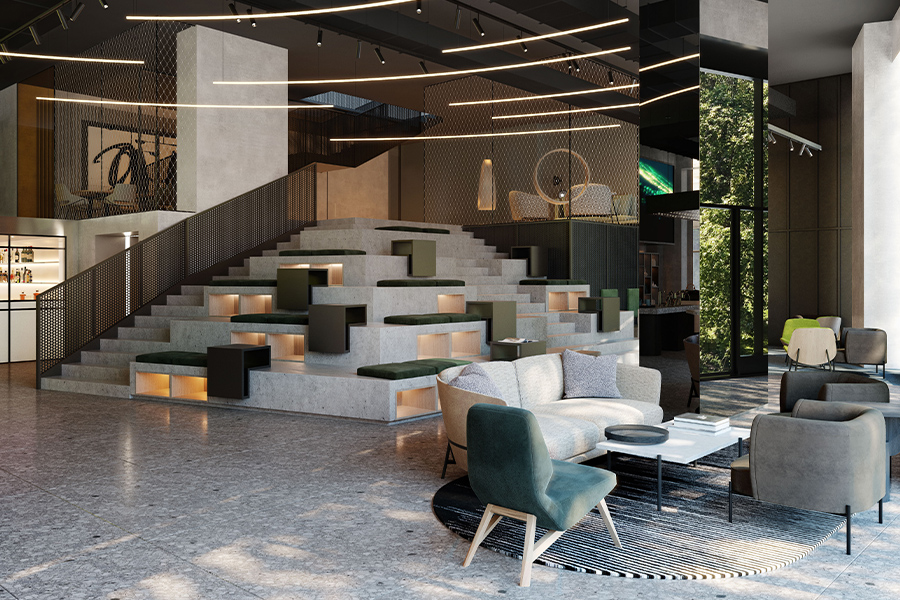
The bright and airy lobby in SIRO Boka Place in Montenegro features tiered seating
The future of wellness travel is built around optimization. According to McKinsey, more than 60 percent of wellness consumers find it important to invest in products and services that help with healthy aging and longevity, from fitness-centric hotels to advanced biohacking medical services. Almost 60 percent of consumers who traveled for wellness treatments in 2024 said they expect to travel for these treatments in the next year.
“There’s a trend called glow-up getaways,” says Seyi Oduwole, foresight analyst at trend forecaster the Future Laboratory, “which is all about self-optimization, betterment, longevity, and lifestyle.” Guests are seeking measurable outcomes and personalized care. “They want more than just a relaxing holiday,” she says. “They want to see results—a kind of transformational travel.”
Some brands are meeting this demand through strategic partnerships. Viceroy, for example, recently teamed up with the Class, a music-driven somatic practice, to provide guests complimentary access to in-room and on-property video modules for grounding, energetic resets, and intentional movement. Hyatt also partnered with Future personal training to provide guests with complimentary guided workouts via an app.
McGroarty says the biggest trend and new obsession is with longevity and healthspan, “leading to a new marriage between medicine, wellness and, high-tech biohacking.” Take Sam Nazarian’s recently launched the Estate brand, where guests have access to a slew of medical tools like MRI, CT, DEXA scans, advanced blood work, hormone therapy, telehealth, and more.
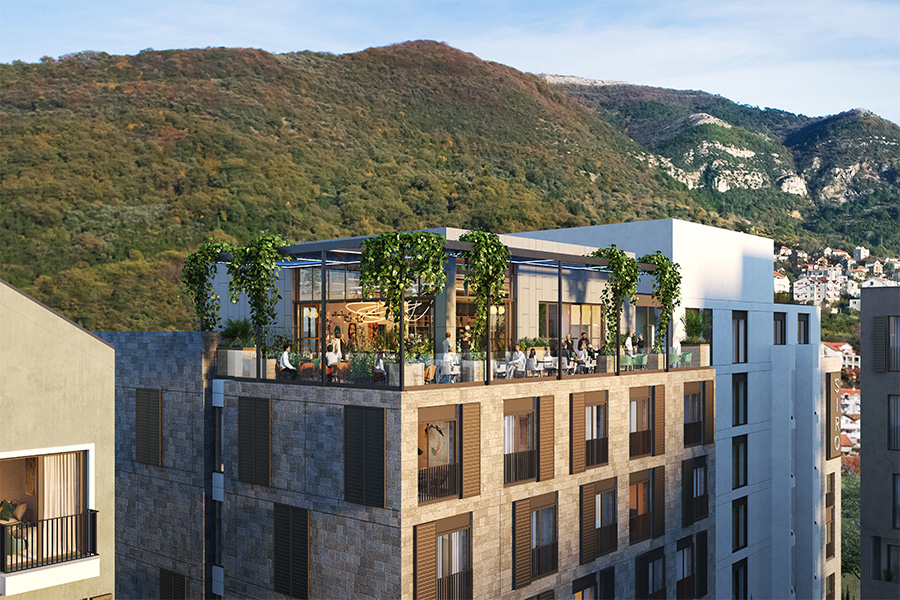
The rooftop terrace at SIRO Boka Place offers panoramic views of the bay and surrounding mountains
For fitness hospitality brand SIRO from Kerzner International, wellness is embedded into the architecture itself. At the Atellior-crafted SIRO Boka Place in Montenegro, for example, movement flows organically through the ground floor’s high-energy zones—gyms, rooftops, and restaurants—while guestrooms and the Recovery Lab offer a deeper respite. “We wanted the ground floor to feel like different experiences within a single space, not small spaces connected by corridors,” says Sara Felch, vice president of design, Americas, for Kerzner International.
The rooms also include a recovery cabinet with resistance bands, yoga mats, and other accessories for post-workout stretching. “SIRO plays a balancing game between energy, movement, and connection versus recovery, retreat, and mindfulness,” Felch adds. “We are very conscious of designing spaces that guests gravitate toward no matter where they are in their fitness and recovery journey, or what kind of day they’re having. We want everyone to feel welcome, seen, and understood.”
Ameyalli Park City by Appellation, slated to open in 2026, takes a nature-first approach to longevity. Centered around a natural geothermal spring, the residential community—designed by Overland Partners—includes an 80-key hotel, Charlie Palmer restaurant, and a 50,000-square-foot Wellbeing Center. Developed in partnership with new age guru Deepak Chopra, the programming is guided by his seven pillars of wellbeing: emotional regulation, sleep, mindfulness, movement, relationships, nutrition, and laughter.
“We hope guests leave feeling nourished, reconnected, and inspired,” says Christopher Hunsberger, COO and cofounder of Appellation. “[This] is a place to slow down, engage with nature, find a sense of community, and rediscover whole body nourishment and destination travel through incredibly thoughtful wellness and culinary experiences.”
Aging Well
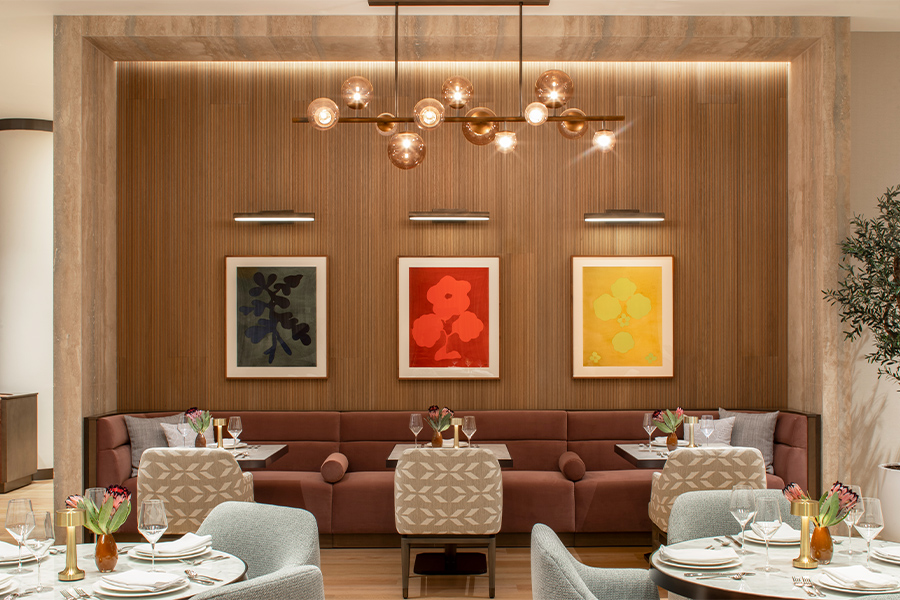
Ellore Santa Clara in California reimagines senior living with a lounge that pairs low-profile seating with textured finishes
By 2030, one in six people will be 60 or older, according to the World Health Organization. In response, the next generation of senior living is redefining what it means to age well.
Properties like Inspīr Embassy Row, designed by Beyer Blinder Belle; the HKS-crafted Vivante Newport Center; and Coterie Hudson Yards from MAWD are setting a new benchmark for senior living.
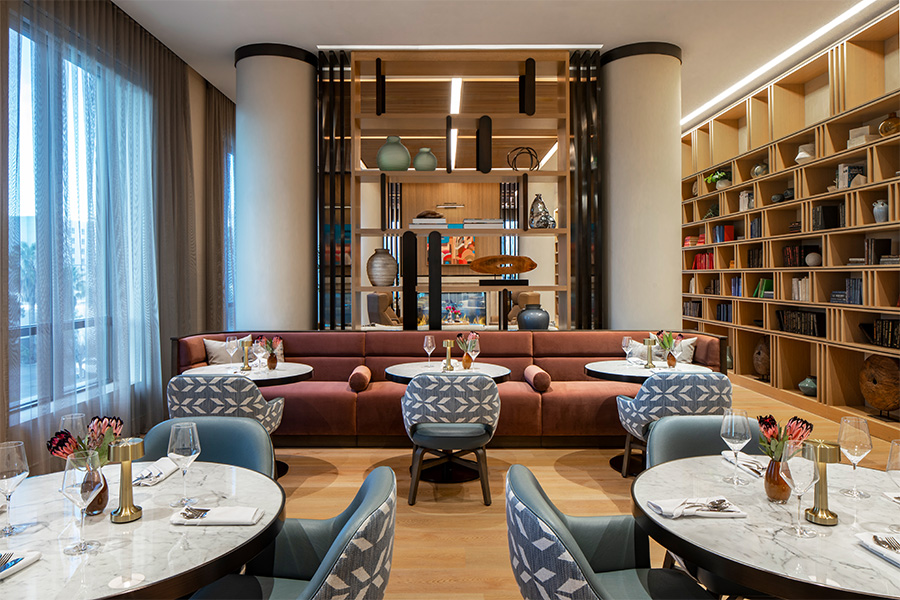
The bistro at Ellore Santa Clara is wrapped in wooden bookshelves and muted tones
One of MAWD’s latest projects, Ellore Santa Clara, honors the generation that built Silicon Valley. “Their lives have stood in pursuit of innovation,” says firm cofounder Elliot March. “This group has traveled the world, stayed in the finest hotels, and dined in the most captivating restaurants. As such, we designed a residence that brings these hospitality elements into both the residential and amenity units.”
The community is layered with vibrant, modern touches, including social spaces like a piano bar, multiple lounges, private dining areas, and wellness rooms. Above all, the essential ingredient is happiness. “We designed the residence to be sophisticated and hospitality inspired, but to also incorporate a great deal of joy through color, pattern, and form, March says.
Designing for All
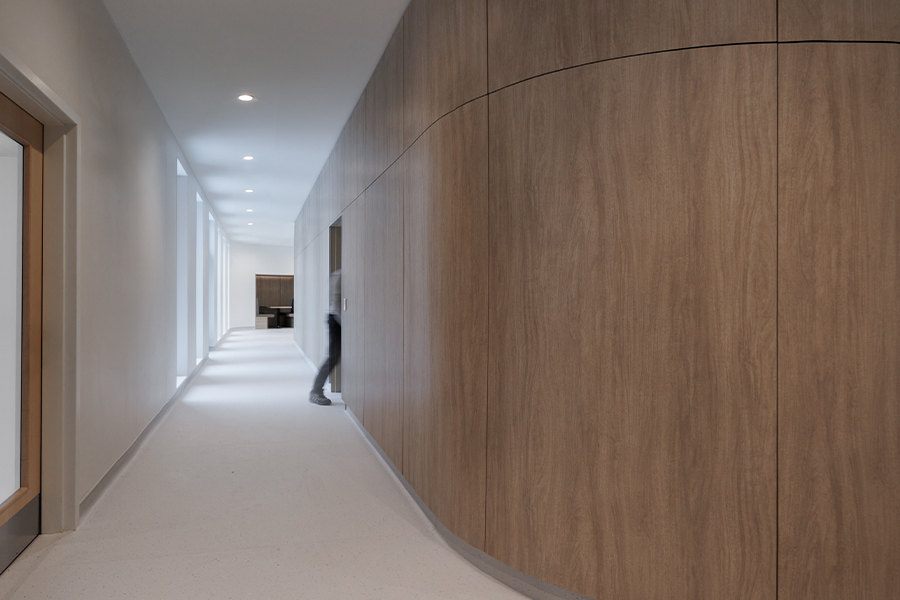
A curved corridor at Centre Lise et Yvon Lamarre in Montreal creates a calming, intuitive corridor within the neuroinclusive residential development
With roughly 15 percent of the global population identifying as neurodivergent, inclusive design is expanding beyond ADA compliance to embrace emotional and sensory needs. In Montreal, the Centre Lise et Yvon Lamarre—a residence and day center for young adults with autism designed by Lemay—is rooted in warmth and rhythm. “It doesn’t look like a hospital but more like a residential space with soft colors, wood, and calm acoustics,” says Bryan Marchand, architect and design director at Lemay.
The space is thoughtfully divided into a residential wing and day center, with intuitive features like rounded corners and color continuity that reduce anxiety and support autonomy. “Round corners help people see what’s ahead without fear,” Marchand explains, while color—like a soft blue from an apartment door that fades into the corridor—reduces anxiety. “It’s less of a shock when transitioning,” he adds.
Two sensory rooms, cocooned in cushions and absent of windows, offer a personalized respite via adjustable lighting. Marchand sees broader applications for these neuroinclusive strategies—from public transportation hubs to hospitality.
Indeed, such elements are also being adopted in airports and hotels. Newark Liberty International Airport’s Terminal A includes a 1,000-square-foot sensory room designed by PGAL and the Anderson Center for Autism, featuring fish tanks, tactile bubble tubes, and river-like carpets.
TUI Blue, meanwhile, has introduced sensory rooms at several hotel properties, designed with dimmable lighting, textured panels, and calming zones. “By providing sensory-friendly spaces in our hotels, we’re actively removing barriers to travel for neurodiverse individuals and their families,” says Craig Moffat, product and proposition manager at TUI Blue. The brand also partnered with Special Educational Needs agencies to provide staff training. “Our goal is to create environments where every guest feels seen, respected, and able to relax fully,” Moffat adds.
Diverse Programming
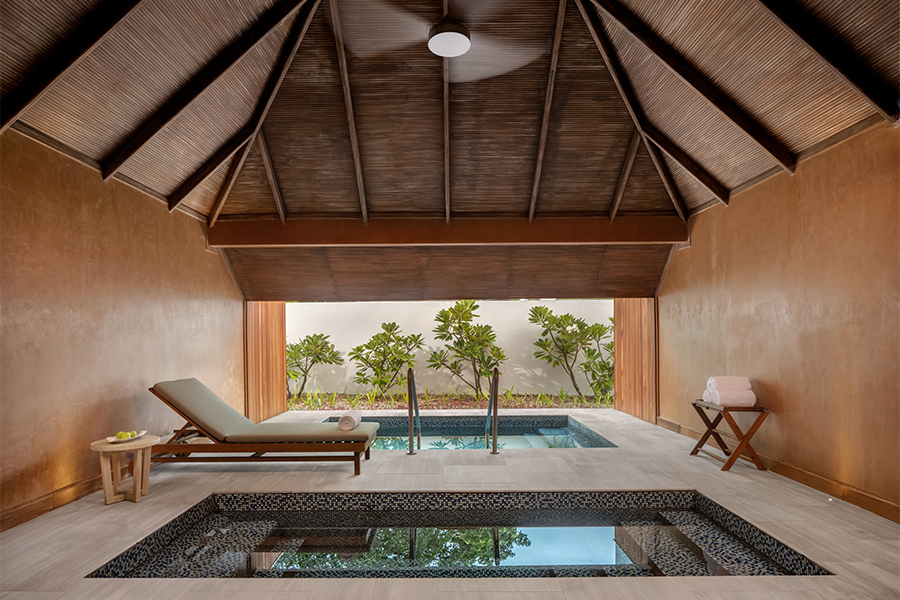
Soft coral-toned walls frame a pair of plunge pools at the Six Senses Kanuhura
Wellness programming is no longer one-size-fits-all. From stargazing to women’s programming, hotels are tailoring experiences to evolving guest needs. Even children are being considered. At the AW2-designed Six Senses Crans-Montana in Switzerland, for example, the luxury wellness brand’s kids club introduces breathwork and herbology to its youngest guests, ensuring that the next generation sees wellness not as a luxury but as a way of life.
Additionally, at the Six Senses Kanuhura in the Maldives from eco.id architects, the Female Wellness Programming offers three-, five-, or seven-day personalized journeys tailored around hormone balance, metabolism, and perimenopausal care, with practical tips for guests to take home with them. “While each program is designed individually, we have seen groups of women providing one another with a sense of community throughout their stay,” says Anupam Banerjee, the resort’s wellness director.
Solo female travel is also on the rise, with women comprising 71 percent of solo travelers, according to Virtuoso. “[It’s] a huge market that will be massive in the next few years,” says Future Laboratory’s Oduwole. “There’s going to be a generational wealth transfer, particularly with single women, and they’re going to do all of these things [on their own].”
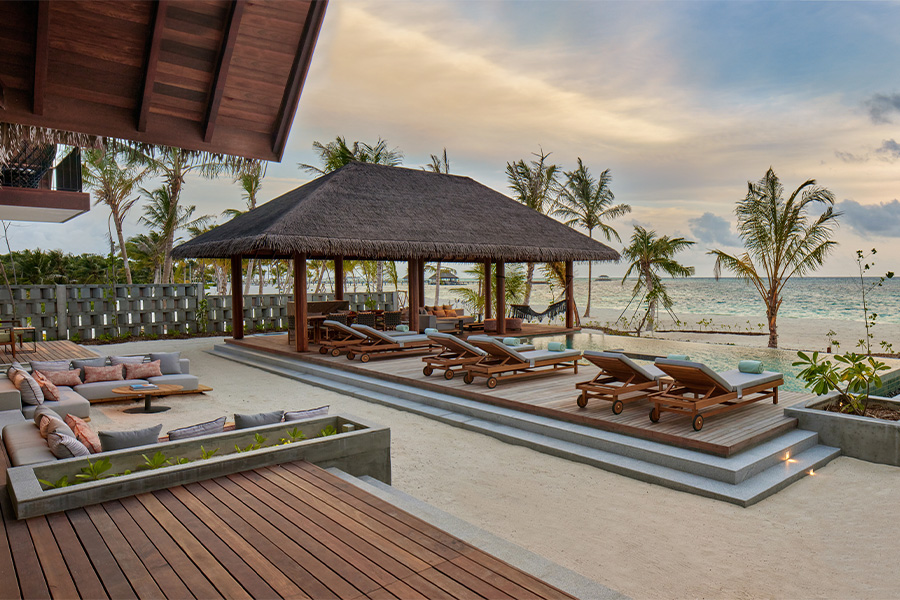
The three-bedroom Beach Reserve at the Six Senses Kanuhura features an outdoor area with beach access
Six Senses Kanuhura also offers a Mindful Stargazing program that blends guided meditation with night sky viewing, inviting guests to unwind in a setting with minimal light pollution. This is part of the growing trend of noctourism, for those looking to see the world after dark, fostering reflection and a sense of wonder.
The same resort has a digital detox program, providing guests with tools to create healthier screen habits. “The Digital Detox offers guests the rare opportunity to disconnect from screens and reconnect with themselves and their surroundings,” says Claudian Marrast, spa and wellness manager at the Six Senses La Sagesse in Grenada, designed by BLEU Design Consultants. “By stepping away from constant digital stimulation, guests often experience improved sleep quality, reduced stress levels, and deeper presence in the moment. Our hope is that guests leave with a renewed sense of clarity and a more conscious relationship with their technology use.”
Nature as a Healer
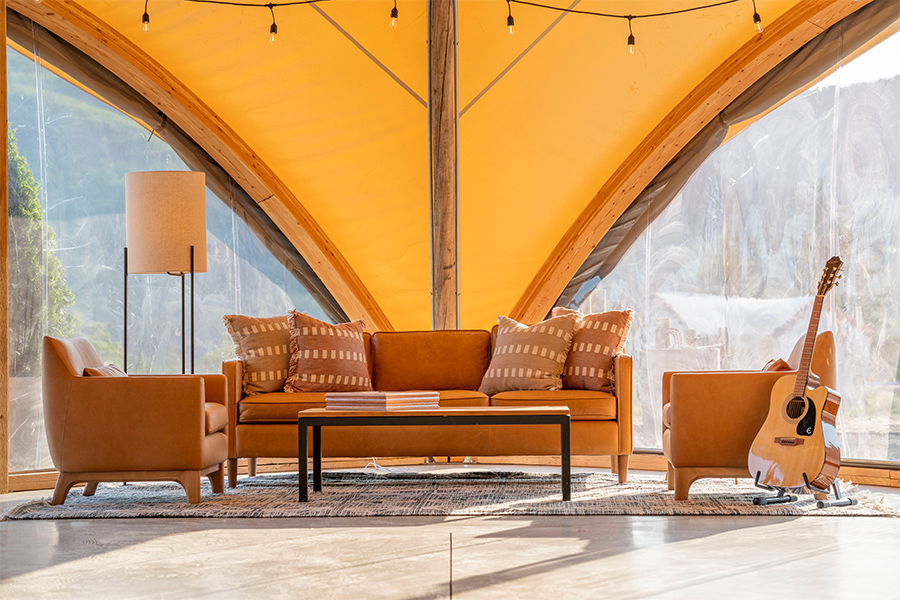
A cozy seating area at Under Canvas Columbia River Gorge in Washington
Ancient traditions have long taught that nature heals. From lower cortisol to better sleep, natural immersion remains one of the most effective wellness interventions. Since Covid, hospitality has responded with a surge of outdoor-centric experiences—ranging from adventurous safari camps to back-to-basics escapes like Autocamp and Under Canvas, where guests reconnect with the elements through lodges and canvas tents.
“Nature is the antidote to much of what ails us,” says Jade-Snow Carroll, owner and designer of Prospect Berkshires, a restorative retreat on 117 acres in Western Massachusetts. Before any cabins were built, the design began with ecological regeneration—they restored the forest habitat, stabilized the riparian edge to protect water quality and provide foraging opportunities for wildlife, and worked on the meadow to help attract pollinators and songbirds. “This created the canvas for our cabins—a thriving, healthy ecosystem,” Carroll says.
Quiet footpaths meander through the property, designed to keep cars at bay. The cabins themselves are elemental in form and material (glass, wood, and stone) that frame and defer to the landscape beyond. “We kept the interiors quiet and natural, putting the view on display,” Carroll says. The resulting experience is a curated calm, with programming to match.
Guests are encouraged to unplug—some even surrender their phones at check-in—and partake in offerings like fermentation workshops, stargazing, birdwatching, and seasonal festivals such as Samhain. “We hope [guests] leave feeling like they had an experience that sparked their own creativity—an understanding that nature heals and calms,” Carroll says.
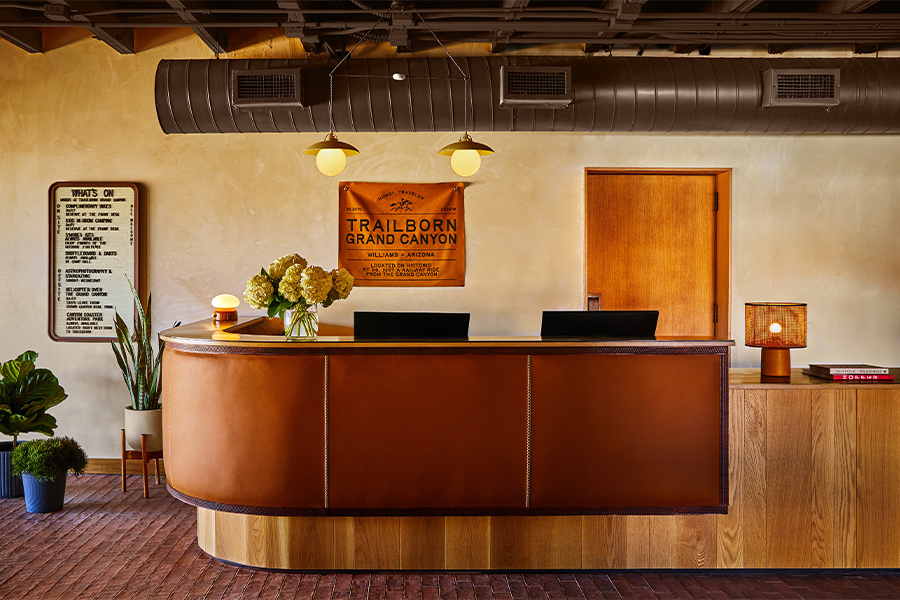
At Trailborn Grand Canyon in Arizona, a curved reception desk anchors the lobby
Trailborn, a boutique hotel brand perched on the edges of national parks, follows a similar ethos. Its destinations include North Carolina’s Blue Ridge Mountains, Rocky Mountain National Park in Colorado, and most recently, its fifth location in the Grand Canyon, designed by Lake Flato. Each property is rooted in place, encouraging guests to explore nearby landscapes through hiking, forest bathing, rock climbing, surfing, and more.
“Trailborn is about creating memorable stays that reflect a deeper respect for the land and encouraging a sustainable future of travel,” says Trailborn cofounder Mike Weiss, noting that guests should feel recharged and restored after experiencing one of the brand’s properties. “Mike and I feel that life should be an adventure,” says cofounder Ben Weinberg. “It’s an idea we latched onto early on, and one that’s been woven through every part of Trailborn. Life feels bigger and fuller when people are outside, seeing new places, experiencing new things, and spending time with the people they love.”
Creating Community
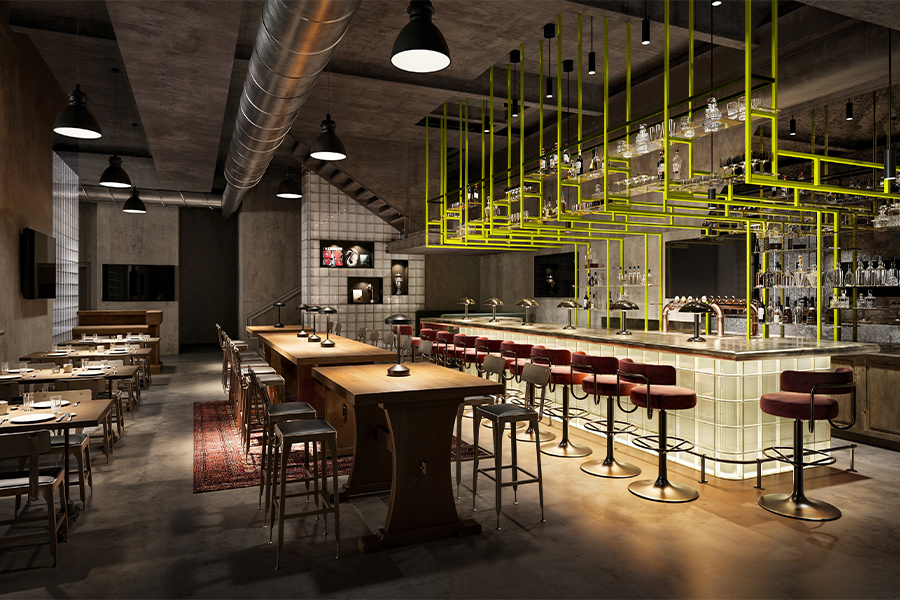
Exposed ductwork and green piping inject playful energy into the restaurant and bar at Ballers Philadelphia, shown in a rendering
Perhaps the most essential wellness ingredient isn’t a program or material—it’s people. Wellness is increasingly social, with new generations redefining how they gather and connect.
Ballers, a social sports concept launched and designed by Good City Studio, is an example of how movement and community go hand in hand. Its inaugural location occupies the Battery in Philadelphia, a 100-year-old transformed power station with pickleball, padel and squash courts, golf simulators, turf areas, a recovery lounge, wellness spaces, an all-day bar, and event venues—all within a 55,000-square-foot campus. The space is designed for seamless social interaction, where courts and lounges blur together, encouraging spontaneous connection. The venue also hosts DJ nights, fashion pop-ups, and art exhibitions to activate the space beyond sports.
“Ballers is bringing country clubs to the city,” says Amanda Potter, founder and chief creative officer of Ballers, which is founded, concepted, and designed by Potter’s Good City Studio. “We’re celebrating the rich legacy of racquet sports and golf, and we’re weaving in high design with social cultural activations to create an atmosphere fueled by camaraderie and friendly competition.”
Rooted in industrial minimalism, the interiors are layered with nostalgic details. “The copper objects on our bar shelves were inspired by my mom, who sold copper for extra cash before I was born,” Potter shares. “The neon yellow metal accents [nod to] my love of Gianni Versace when I was a teenager in the ’90s. Our design aesthetic could be labeled as eclectic, but our hope is that these personal touches evoke a sense of home.”
Traditional gathering spaces like bars and nightclubs are also losing their allure in favor of healthier, more purposeful social experiences. “[Gen Z] are getting into clubs that are all focused on wellness,” says Oduwole. “That’s where they want to hang out and meet up, rather than going to an actual nightclub.”
Equinox’s Biski seconds this shift: “People feel good when they feel healthy and alive. It’s no longer about partying and only having had three hours of sleep. Now, it’s about going to the spa, getting red light therapy, going into hyperbaric chambers, saunas, cold plunges, which make you feel as invigorated as you might when you go out partying—and you’re still with your community. It’s a completely different approach in life.”
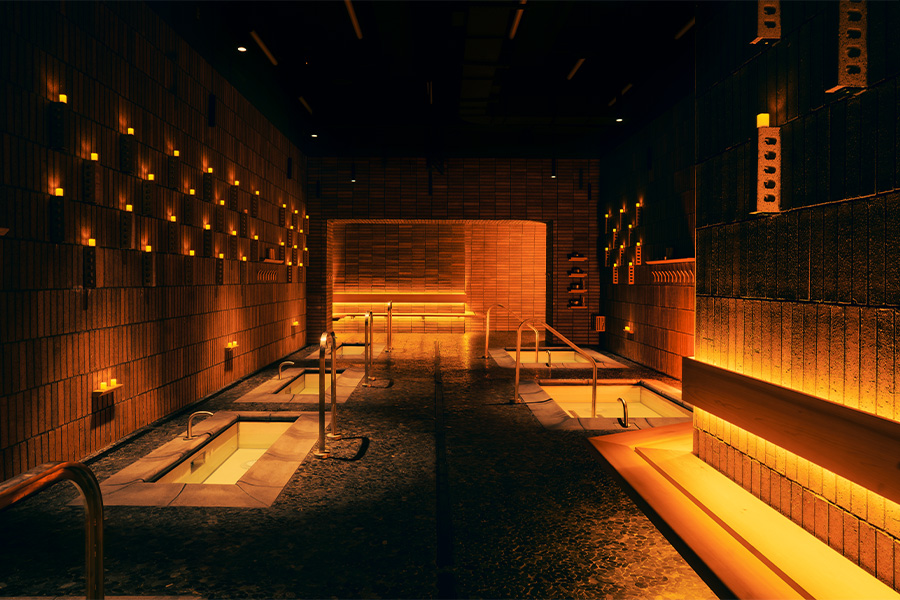
The cold plunge room at Othership Flatiron in New York features sunken stone pools, wood walls, and ambient lighting
This cultural pivot has given rise to a new genre of wellness gathering spaces, including social spas like Remedy Place (with five outposts in the U.S.) and Othership, a community-oriented bathhouse with locations in Toronto and New York.
At Othership, events include DJ-led, alcohol-free parties alongside contrast therapy, breathwork, and guided sauna sessions. “We understood from the start that Othership wasn’t just about saunas and ice baths; it was about crafting an emotional journey,” says Ali Mcquaid Mitchell, founder and creative director of Toronto-based Futurestudio, the design firm behind the properties. “As designers, we approached the project with the idea that the space itself should guide users through states of contrast—heat and cold, tension and calm, stillness and connection.”
Unlike traditional retreats, Othership encourages dialogue and emotional release during sessions. “The design needed to hold people emotionally, so we prioritized flow and points of pause,” Mcquaid Mitchell says. “There are moments to gather, but also moments of quiet retreat, where one can be alone in stillness. Wellness spaces need to hold both intensity and calm, individual reflection and collective energy.” Ultimately, the hope is for “people to leave Othership feeling more connected,” she adds, “to themselves, to others, and to something larger.”
Amid these evolving wellness trends, the Well’s Sarhan sums it up simply: “The thing that matters most is connection to community. All the other stuff—food, longevity, spa, movement—none of that matters without [it]. It’s the foundational pillar that holds everything up.”
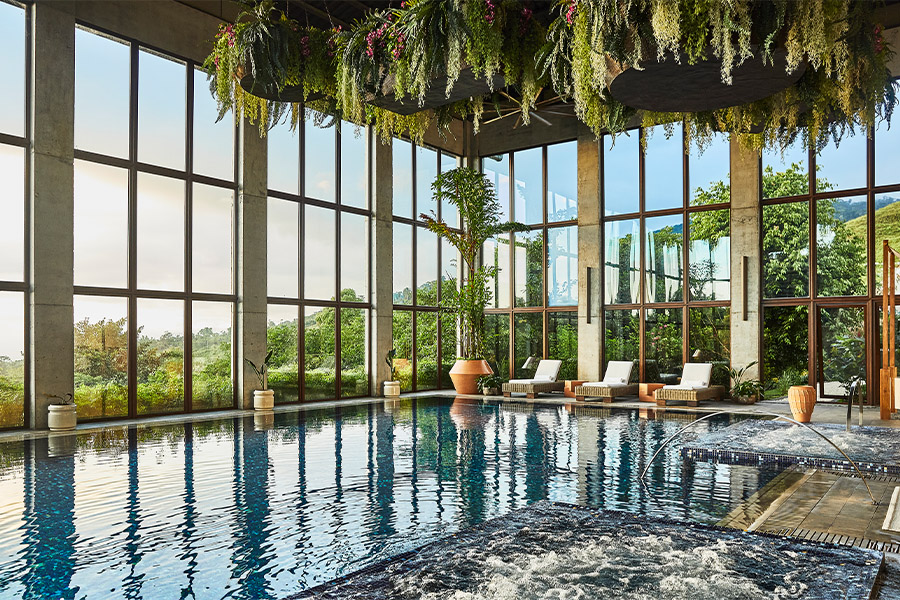
Formerly the Well, plants and windows define the pool at Hacienda AltaGracia in Costa Rica
Photos by John Athimaritis, Art Gray, Christian Harder, Claude-Simon Langlois, Ian Patterson, Cole Wilson, and renderings courtesy of Ballers, Six Senses, Under Canvas, and the Well
This article originally appeared in HD’s July 2025 issue.

